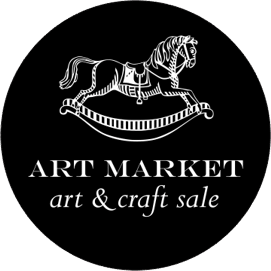EXHIBITOR TIPS
DECIDE ON YOUR IMAGE BEFORE YOU START DESIGNING A BOOTH
Written by Simon Wroot. Reprinted with permission of the author.
The image that most craftspeople present to the public is one created by revisions to a basic community craft show table: a table with a cloth and some ‘stuff’ put on it. Lights are added, as are risers, or some sort of display. This is then refined or updated occasionally until here we are now a mish-mash of display and lighting.
People will base their perception of your product’s value upon how it’s presented. The way your display presents you and your work will define the apparent value that you, and therefore the public, place on your work. Compare the look of a large discount retailer to that of a prestigious retail outlet.
Decide on your image before you start designing a booth
So what is your image? How do you want the public to see you and your business? Start to think, now, how you want your entire booth display to appear. Do you want to it be earthy, natural, slick, exciting, cosy, alluring, sexy, expensive, cheap, quality, hand-crafted, unique, traditional, sophisticated, authentic, professional etc. You’re not just selling your work you’re selling yourself (artist), how do you want to appear and be remembered?
THE FACILITIES
Basic Booth shape or layout
Do you need wall space, floor space, or table/display space? Will you work from behind a table, or will you invite the customers into your booth? In general, vendors with larger items for sale will have the public walking around the product, looking, touching, trying on, and those with smaller items would rather be behind the table or display to keep an eye on their more easily “scooped” items, and also be able to talk to the customers face to face.
Space Requirements
Your next consideration is how much floor space and/or wall space you actually need to adequately display your product. Note that it is not necessary to have all of your product out on display at one time, you can keep variations in size, colour etc. in storage to bring out when making a sale, and this will keep your booth from being cluttered and possibly overwhelming for the customer.
Basic Booth Facilities
What does the organizer provide? Make a list of what you get (or what you can pay for) so you can decide what you need to provide yourself. Each show will be different so you will need to be ready to supply whatever the organization doesn’t.
THE STRUCTURE
Surroundings (walls or backdrops)
What do you want to stand in front of? There are lots of possibilities of expression here, but remember that this is the frame for your work, and should support what is in front of it. It should not be an afterthought, but part of the overall theme.
Display
- Furniture: How are you going to support and show-off your product. The quality of your display units, and the creativity used to design them will define how the buyers perceive the quality and creativity of the work shown upon them. Great work on a grungy set of shelves usually looks like grungy work. My challenge to you is to find new and exciting ways to support and showcase your work.
- Layout and Product Placement: Product placement has a direct impact on sales. How you arrange the flow of your work, what groupings you use, how you draw the eye to specific items will all determine how the public look at your work. How their eyes travel around your display, ultimately, will be reflected in how many of those eyes are drawn closer.
Lighting
Lighting is necessary, good lighting is critical. Lighting sets the mood, illuminates your unique creation (booth), separates you from your neighbours, showcases and highlights your work. It brings your whole creation (your booth) to life!
The key to good lighting is to have the light source over the customer’s head, highlighting the work displayed before them. Getting this to happen is one of the hardest challenges to the booth designer and requires a lot of ingenuity!
Extra Furniture
You do need a small, secure ‘office’ for a cash-box, space for credit-card slips and imprinter, your lunch, coffee cup, purse, etc. You also need packaging/wrapping space. This may be inside risers or shelves, inside a showcase back, behind a portion of hardwall, or even a unit in a corner or out of the way.
Signage
Your identity is initially established through the use of graphics and signage. Be bold! Announce who you are, your business name, where you’re from, and possibly a graphic or two to announce the theme of your work. Your signs should be large enough to be easily read from 30 feet away, and should be lightly lit to bring them off the backdrop. This can attract customers from the aisles to your booth; it gives them a point to start to recognize you and your work; it gives them a label to remember you.
